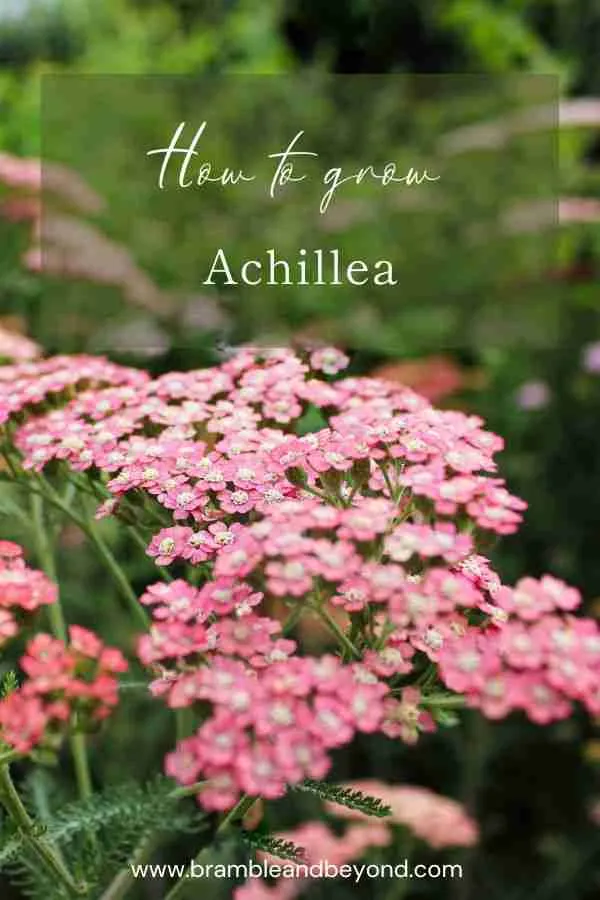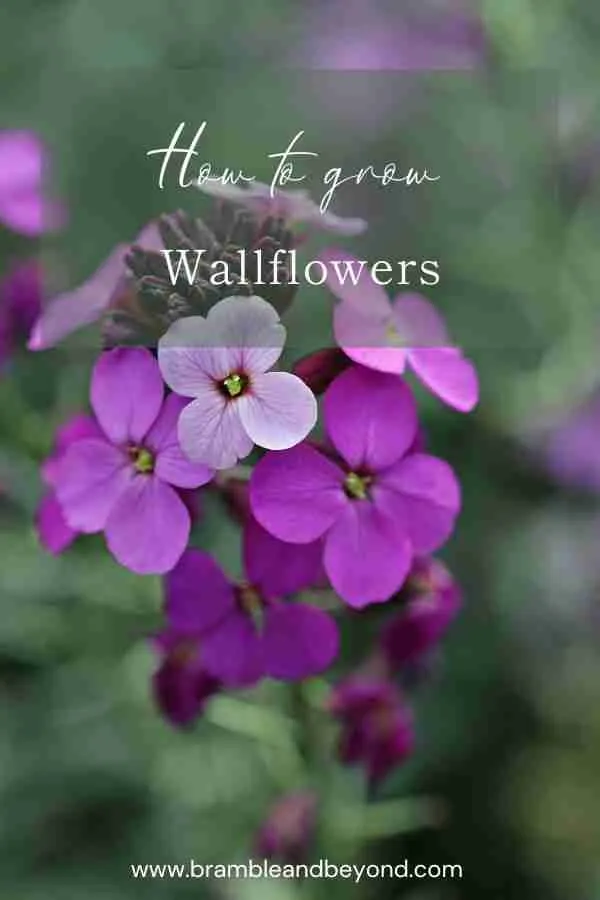Disclosure: This post may contain affiliate links, meaning I get commission if you decide to make a purchase through my links, at no cost to you. Please read my Affiliate Disclosure for more information.
Foxgloves are charming flowers that have been popular in cottage gardens for many years. They are well-loved by pollinators and have long, graceful stems that are filled with buds. These buds open up into beautiful flowers in shades of soft purple, pink, white, or apricot, with freckles of deeper colors. Foxgloves are not only great for cutting and creating dramatic arrangements, but they also serve as an important food source for pollinators. Here’s how to grow foxgloves.
What are Foxgloves?
Foxgloves (Digitalis purpurea) are stunning biennial plants that bloom for several months, typically from late spring or early summer. We have two native varieties in our gardens, Digitalis purpurea and D. purpurea f. albiflora, which produce pinky-purple and white flowers, respectively. However, there are many other species and cultivars available in a range of pastel or bold colors.
These elegant plants can reach heights of up to 5 feet (1.5 meters) and bring a vertical beauty to any garden. They have long, strong stems adorned with clusters of trumpet-shaped flowers. The blooms come in various shades, such as pink, purple, white, and yellow, often with lovely freckles or spots that enhance their charm.
Foxgloves are typically found in woodland areas and prefer dappled to deep shade. However, they can also survive in full sun, making them versatile for different garden settings. They are native to Europe and have adapted well to cooler climates.
These plants are biennial, meaning they grow foliage in the first year and then display a spectacular show of flowers in the second year.
Foxgloves like to cross pollinate and self-seed, ensuring a continuous presence in the garden, although the colours change each year. There is nothing more beautiful in early summer than a woody glade full of foxgloves and bluebells. I have tried to replicate this magical scene with varying degrees of success over the years. I can now recognise a foxglove seedling at three steps and try to heard them into a space under my willow so I can enjoy looking them from my kitchen window.
It’s important to be aware that all parts of the Foxglove plant, including the seeds, are poisonous. Therefore, caution should be exercised when handling them, especially around children and pets. Despite their toxicity, Foxgloves remain a beloved choice for experienced gardeners, as they provide a captivating and wildlife-friendly addition to any garden.
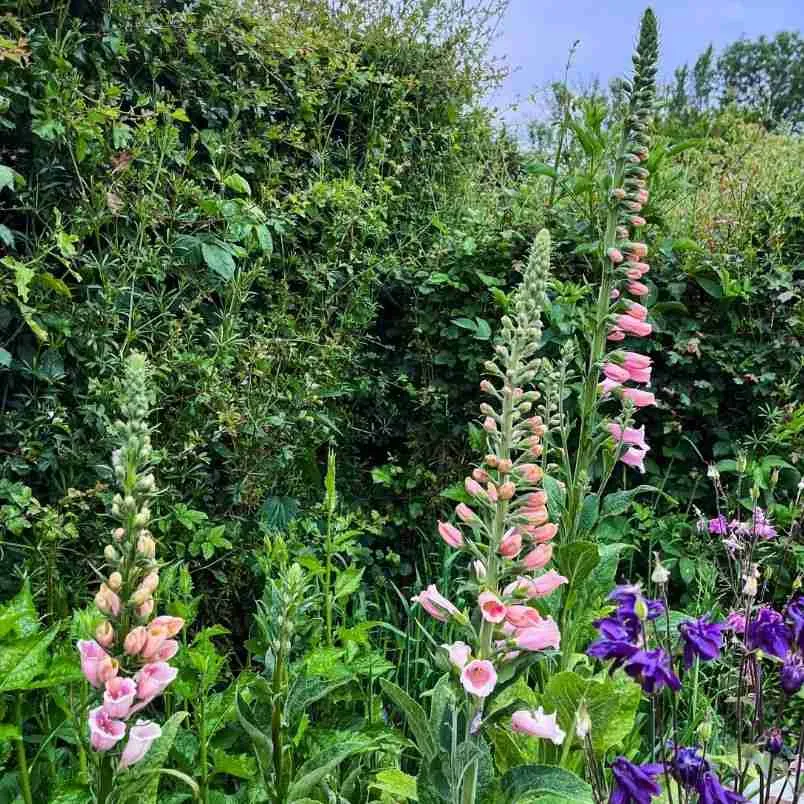
How to grow Foxglove:
Like all biennials, foxgloves should be sown by midsummer and planted out by September for flowering the following year.
- Sow seeds from late spring to early summer and plant seedlings in the garden at least 6 weeks before your first autumn frost.
- Plants will winter over in the garden and bloom the following spring.
- Can be sown direct.
- Sow early summer for flowers the following early summer.
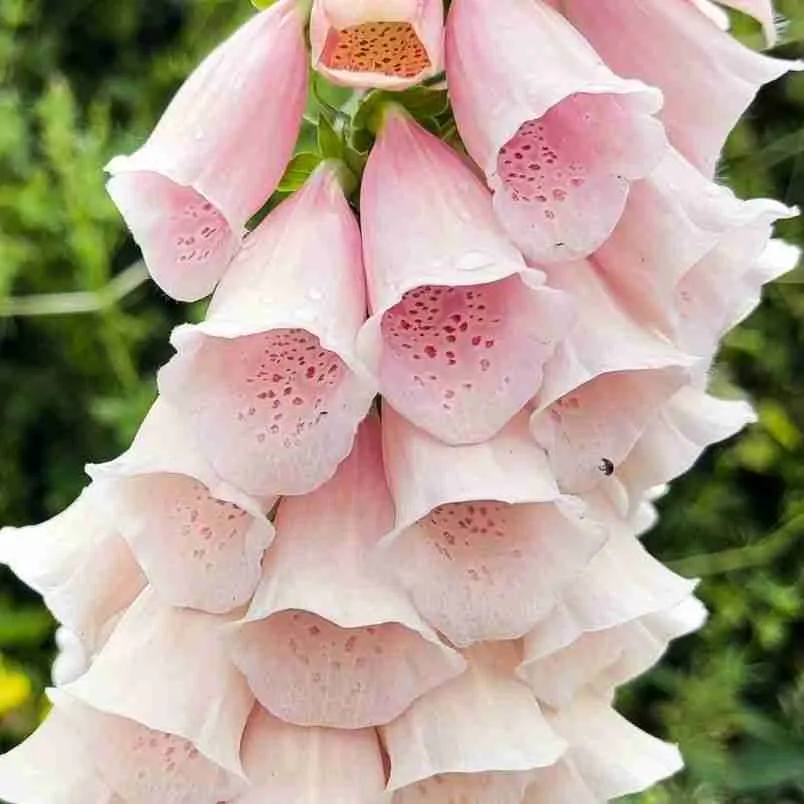
Plant details:
- Plant type: biennial
- Height: 100cm+
- Site: part sun/shade
- Sowing Depth: 6mm
- Germination: 14-21 days
- Temperature: 15-20°C
- Days to maturity: 330-360 days
- Plant spacing: 30 cm
- Pinch: not necessary
- Staking: not required
- Drying: no
- Approx seeds per packet: 500
Please note we pack the majority of our seeds by weight so the number of seeds indicated is only an approximation.
Currently, I sell our seeds, and other bits and bobs, through Etsy, so the link below will direct you there.
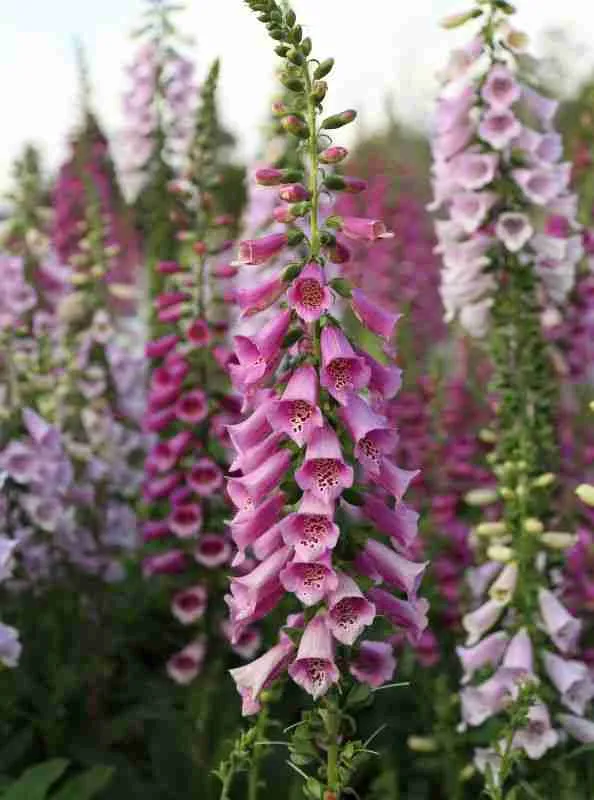
Harvesting and vase life:
- The trick to getting the longest vase life from foxglove is to cut it before the bees find it. When the blooms are pollinated they drop from the stems, so harvest early when just a few blossoms are open.
- Cut when a third of the flowers are open on the stem; they will continue to open in the vase.
- For smaller stems remove the central flower spike to encourage side shoots.
- Expect a vase life of 6-8 days.
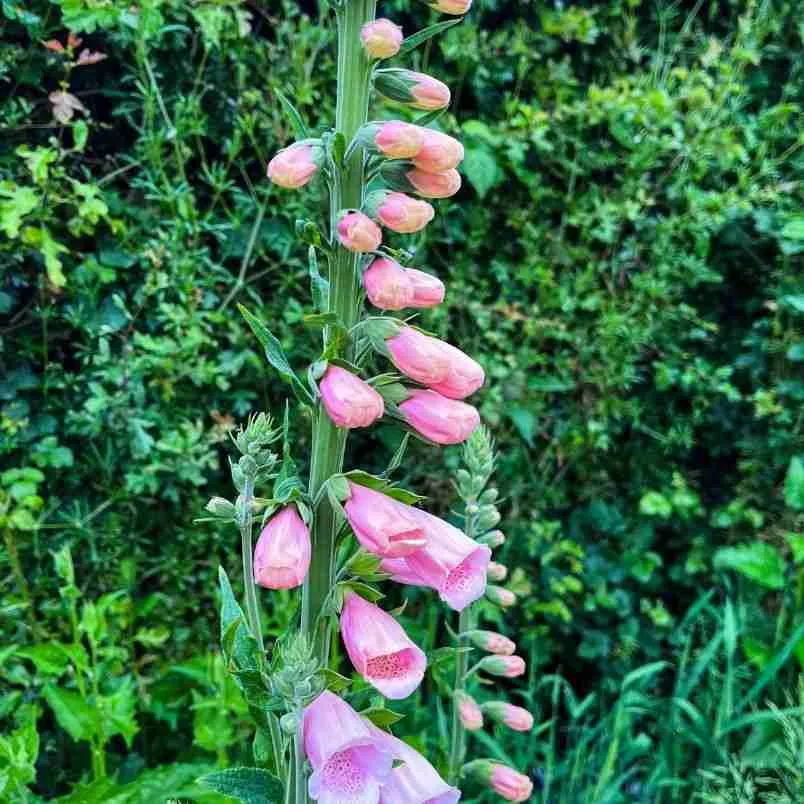
Here are my top tips for growing Foxglove (Digitalis purpurea annua):
- Foxgloves is a biennial, which means they flower in the second year of growing. What this means in my experience is that you get flowers in that awkward gap in June, when nothing else seems to be in flowers, so they are extremely useful.
- You can sow your Foxglove seeds mid June for flowers the following June. If you want an easy date to remember, plan to sow them on the summer solstice (usually 21st June).
- Foxglove seeds are tiny so try and sow as thinly as possible on the surface of pre-watered compost and then plant them in their final position in early Autumn.
- Foxglove is a tall plant, but does not grow very wide so can be planted closer then you would think, about 30cm apart.
- These plants are happy in both shade and full sun, so you have flexibility in choosing the perfect spot for them in your garden.
- Even though these plants are tall, they are fairly robust and don’t usually require staking but if your planting area is particularly exposed you might feel better if you did.
Remember, gardening is not just a hobby, it’s a way to relax, express your creativity, and connect with nature. Happy gardening!


